Meridian Pointers to South
Meridian pointers to south are pairs of stars that cross the meridian together and point down to South on the horizon. In the diagram below, Ke Mirzim (in the constellation Sirius) and Ali'i o Kona i ka Lewa (Canopus) are aligned on the meridian, which intersects the horizon line at South and passes through the South Celestial Pole (SCP), which is situated below the horizon.
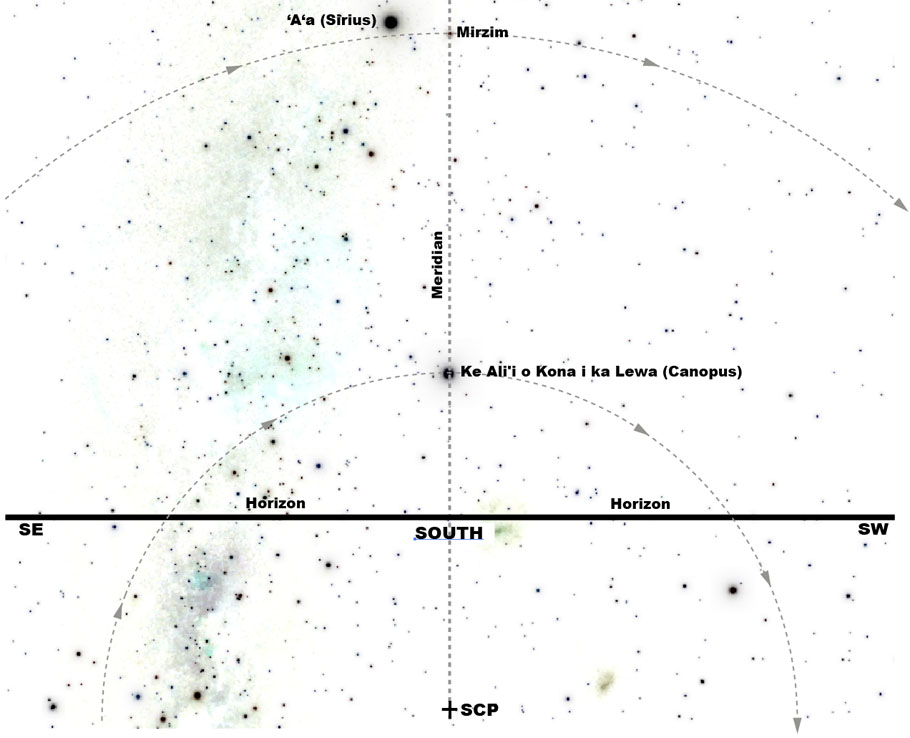
The meridian (dotted line perpendicular to the horizon) is an imaginary line from the North Celestial Pole (NCP) to the South Celestial Pole (SCP), passing through the Zenith, the point in the sky directly overhead and intersecting the horizon perpendicularly at due North and due South.
Because Honolulu is at 21 N latitude, the South Celestial Pole (SCP) is 21 degrees below the horizon. The distance of the SCP below the horizon is equivalent to the latitude of the observer north of the equator. (See “The Celestial Sphere” for an explanation of this phenomenon. Hawai‘i is situated between the latitudes of 19° N and 22°N, with its midpoint at 20.5° N.)
Because of the earth’s 24-hour rotation, the sky above south appears to be rotating, clockwise, from left to right, returning to its starting point every 24 hours. Because the SCP is below the horizon, stars appear to rise and set above the southern horizon in low arcs. We are seeing only the top portion of the circular path they take around the SCP:

Stars above south in Honolulu travel in low arcs.
The night sky charts below depict the alignment of nine star meridian pointers to South. The charts depict the sky without regard to night or day. In daylight or under cloudy conditions at night, you would not be able to see some or all of the sequence since the sky would be hidden by light or clouds, although the stars would be moving in this sequence whether you can see them or not. In different months and seasons of the year, different portions of the sequence are visible at night.
The numbers in parentheses after the star names below are Right Ascension [RA] given in hours (h) and minutes (m). (See “The Celestial Sphere” for an explanation of RA.) The closer the RA numbers are for two stars, the more closely they will align at the meridian. Two stars with the same RA will cross the meridian together.
You can calculate how long it will take a star to reach the meridian after another star by subtracting the RA of the second star from the RA of the first. Thus, Segin in Cassiopeia, with an RA of 01h 54.4m, will arrive at the meridian about an hour and 45 minutes after Polo‘ula (Caph in Cassiopeia), with an RA of 00h 9.2m.
For notes on Hawaiian star names, see Hawaiian Star Lines.
Nine Pairs of South Pointers
1. Ke Ali'i o Kona i ka Lewa (Canopus) (06h 23.9m) and Mirzim (in the constellation Sirius) (06h 27.7m). In the chart below, the bright star above S is Ke Ali'i o Kona i ka Lewa. Its pair, Mirzim, is aligned perpendicularly above S with Ke Ali‘i o Kona i ka Lewa. (Mirzim is located to the right of the bright star (‘A‘a or Sirius) near the top of the chart.
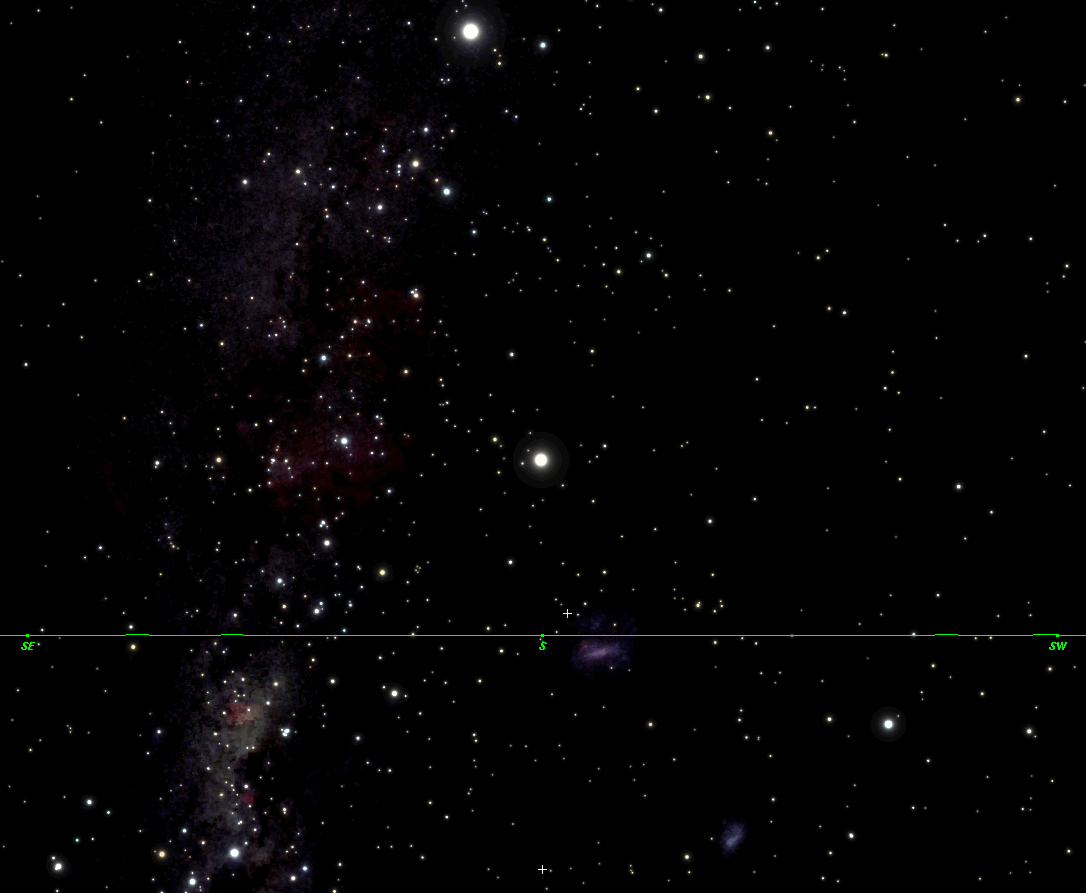
Note: This night sky charts and those below extending to the left and right margins of the text are larger than they appear in this html file. You can view the larger charts by dragging the images from the browser onto your desktop, then opening them with graphic-viewing software.
For print versions of the night-sky charts that would use less toner (like the first chart at the top of this webpage), you can convert the dark sky chart with light stars to one with a white sky and dark stars by dragging the image onto your desktop and using the Invert function in a graphic program like Photoshop (Image>Adjustments>Invert) to reverse the image.
2. Aspidiske, a star in the False Cross and in the constellation Carina (09h 11m) and Suhail in the constellation Vela (09h 08m). About two and a half hours after Ke Ali'i o Kona i ka Lewa (Canopus) and Mirzim, the second pair of southern pointers arrive at the meridian. In the chart below, directly above S is a configuration of four relatively bright stars known as the False Cross because it resembles a cross (or a parallelogram) and is sometimes confused with Hanaiakamalama, the Southern Cross.
Unlike the Southern Cross, the False Cross doesn't appear upright above S; rather, it's tilted on its side. The star at the left-bottom corner of the False Cross in the chart below is called Aspidiske. Its pair, the star Suhail, appears near the top of the chart below, above S and in alignment with Aspidiske and the SCP.
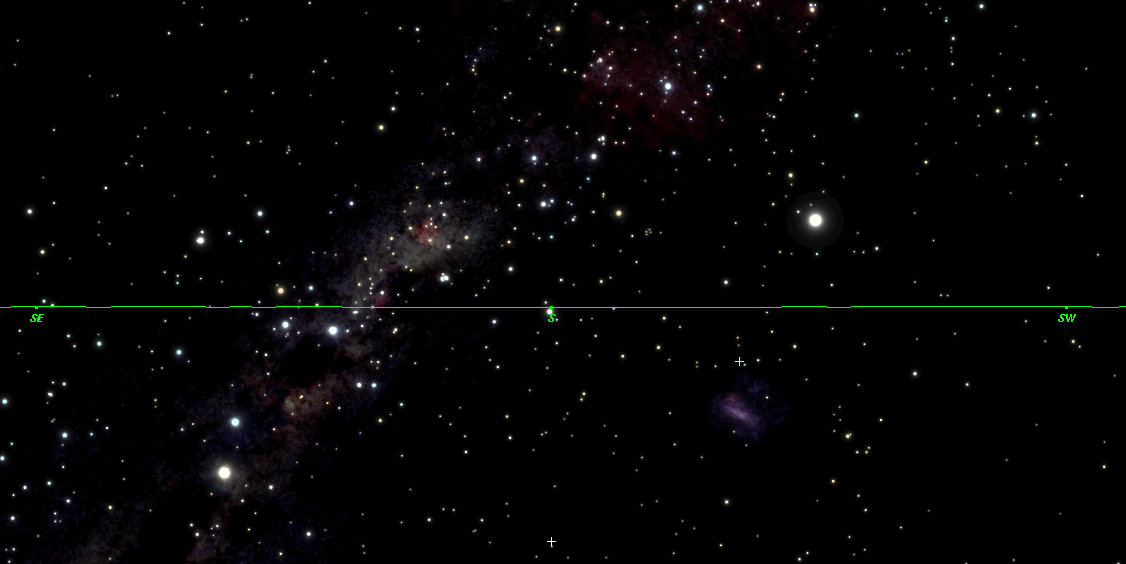
3. Cross Dividers: Unnamed star cluster (10h 46.3m) and Mu Velorum (10h 46.8m). Less than two hours after Aspidiske and Suhail, the next pair of southern pointers cross the meridian. The bottom of the pair is a cluster of stars at the edge of the constellation Carina, right next to Theta Carinae, the two forming a starry patch, just below the star-cloud of the Milky Way in the chart below.
Its pair is Mu Velorum (in the constellation Vela), which appears near the top of the chart, directly above S and the star cluster. This pair is called the Cross Dividers because it appears between the False Cross, and the next pair of southern pointers, the top and bottom stars of the “True Cross” – Hanaiakamalama (Southern Cross).
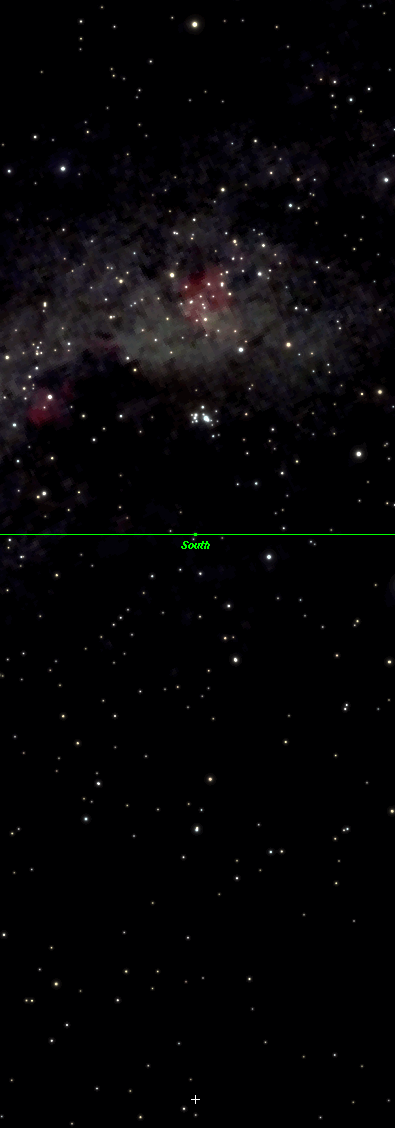
4. Top and bottom stars in Hanaiakamalama (Southern Cross): Ka Mole Honua (Acrux) (12h 26.6m) and Kaulia (Gacrux) (12h 31.2m). Less than two hours after the Cross Dividers, Hanaiakamalama (Southern Cross) is upright over South, its top star Kaulia (Gacrux) above the brightest star in the constellation, Ka Mole Honua (Acrux). In Hawai‘i, the space from the horizon to Ka Mole Honua and the space from Ka Mole Honua to Kaulia appear equidistant: about 6 degrees. Directly above Hanaiakamalama, near the top of the chart is the distinctive box of Me‘e (Corvus), crossing the meridian with Hanaiakamalama.

To the left of Hanaiakamalama, the bright pair of stars Kamailemua and Kamailemua (Beta and Alpha Centauri), known as Na Kuhikuhi, The Pointers, because they point forward to the Cross, have risen from the horizon, at SSE. Farther left, just past SE, Ka Makau Nui o Maui (the Fishhook of Maui, aka Manaiakalani and Scorpio in the West) is rising, the tip of its hook just below the horizon, its shank above it.
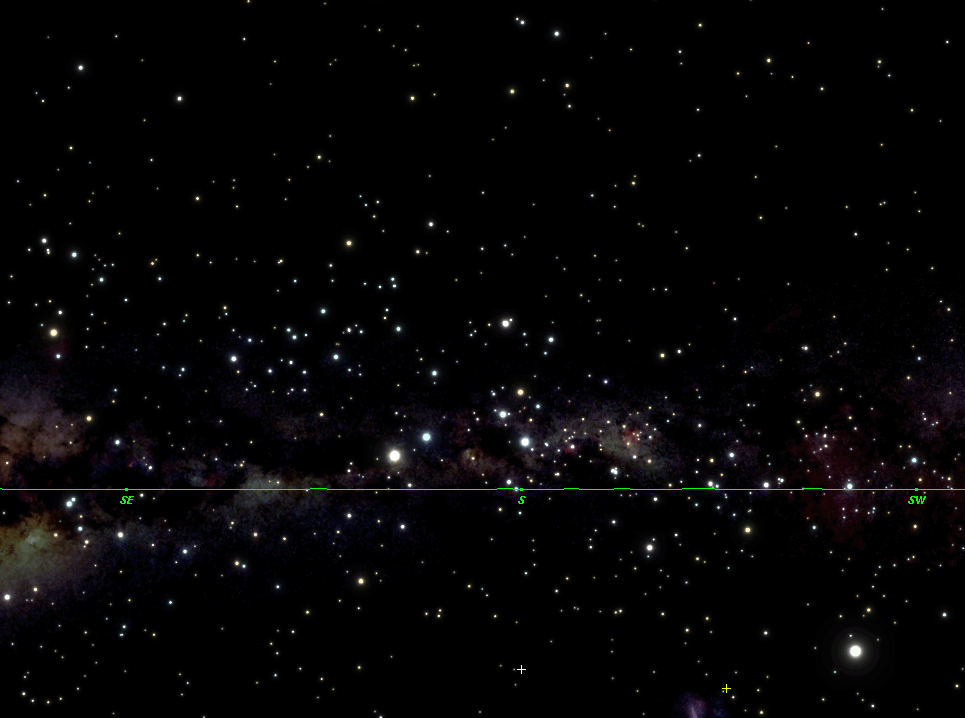
5. Ka Mailemua (Beta Centauri) (14h 3.8m) and Menkent (14h 6.7m). An hour and a half after the Cross is upright on the meridian, Kamailemua reaches the meridian and Hanaiakamalama and Me‘e (Corvus) have rotated to the west.
Kamailemua’s pair is Menkent, a star also in the constellation Centaurus. In the chart below, Menkent is about midway between the horizon and the top of the chart, directly above the SCP, S, and Ka Mailemua. The bright star near the top of chart, already past the meridian, is Hikianalia, or Spica.
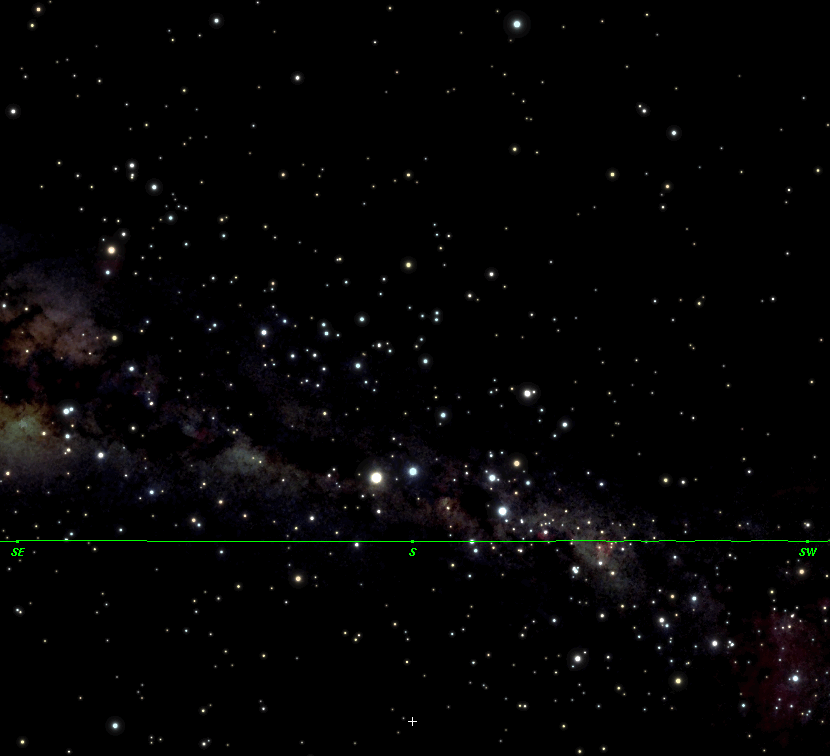
Meanwhile, Ka Makau Nui o Maui, the Fishhook of Maui has completely risen and is standing upright, having hooked I‘a, or Fish (our galaxy, the Milky Way, which appears as luminous star-cloud in the chart). In the chart below, which shows the sky from SE to NE, the Fishhook is on the right, between SE and the chart’s edge. The point of the hook appears embedded in a dark patch between two star-clouds, which form the head and jaws of the celestial fish:
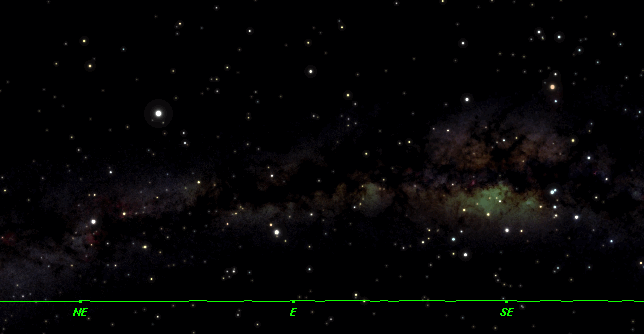
6. Kamailehope (Alpha Centauri) (14h 39.6m) and Alpha Lupi (14h 41.9m). About half an hour after the first pointer, Kamailemua, the second and brighter of the two pointers, Kamailehope, crosses the meridian. Its pair is the star Alpha Lupi, the brightest star above it, about a third of the way up from the horizon to the top of the chart.

Meanwhile, Hanaiakamalama (Southern Cross) is dipping toward the horizon, its bottom star about to touch it, marking S by W/SSW; and toward SE, the fishhook of Maui, in the moutn of the celestial fish, begins to tilt southward.
7. Top stars in Kamakau (The Fishook; Scorpio in the West): Pi Scorpii (15h 58.8m) and Dschubba (Delta Scorpii) (16h 0.3m). An hour and a half after Ka Mailehope, the top of the Fishhook crosses the meridian. There are three stars in a row, and the two lower ones, Pi Scorpii and Dschubba, are south pointers. The less bright one, below, is Pi Scorpii; the brighter one above is Dschubba (Delta Scorpii). The great fish of the Milky Way begins to swing up into the sky. The Cross has begun to set at SSW, the first two stars below the horizon, the last two star just on it.
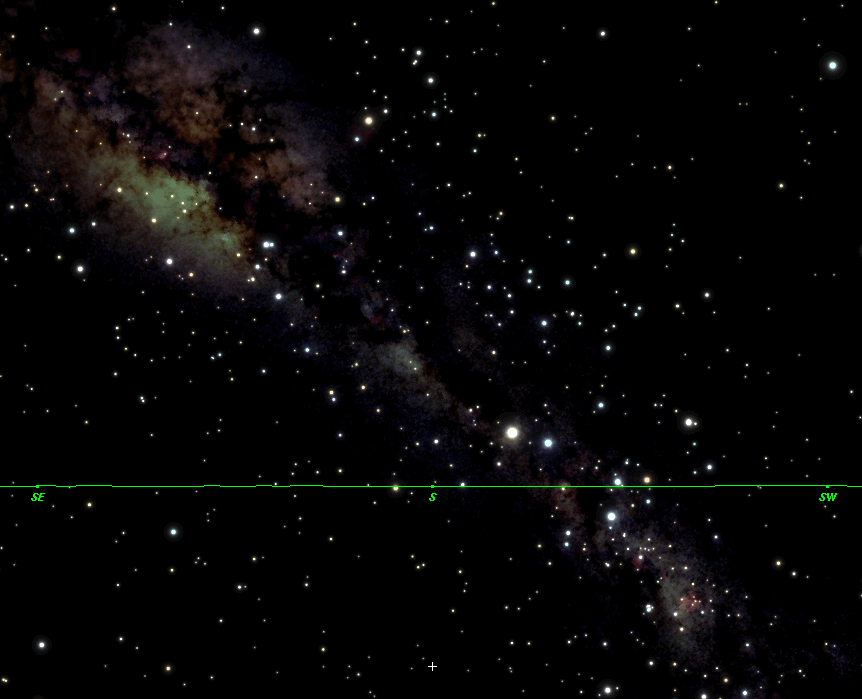
8. Middle stars in Kamakau (Scorpio): Zeta2 Scorpii (16h 54.6m), Mu1 Scorpii (16h 52.3m), and Epsilon Scorpii (16h 50.2m). A little under an hour after the top stars in Kamakau, the lower shank of the Fishhook cross the meridian, three stars in a row, from top to bottom: Epsilon Scorpii, Zeta2, and the faintest, Mu1, pointing south. The Cross has set and the pointers dip toward SSW.
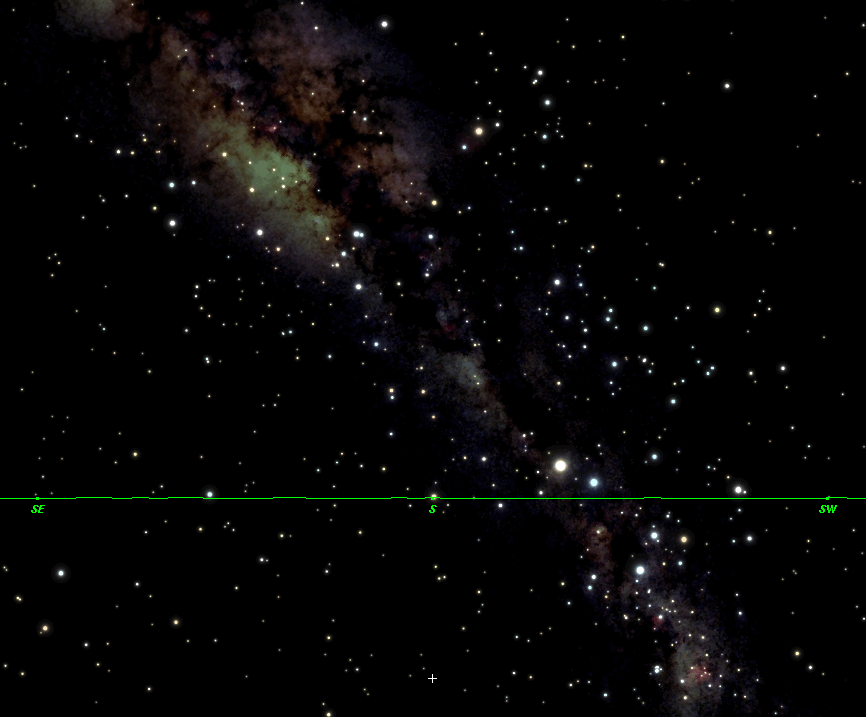
9. Bottom stars in Kamakau (Scorpio): Sargas (17h 37.3m) and Kamaka (Shaula) (17h 33.6m). Forty minutes after the lower shank, the point of the Fishhook crosses the meridian and two star line up with S and SCP below: the brighter star at the tip is Kamaka (Shaula) and its pair is Sargas, below it.

Meanwhile, the celestial fish of the Milky Way is upright, ready to cross the meridian and flip to the west (Huli ka I‘a). The first of the pointers, Kamailemua has set; Kamailehope is just on the horizon at SSW.
